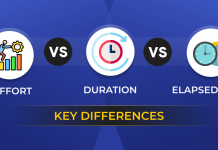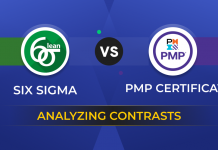
Recovering Off-Track Projects is a Mandatory Skill
One of the keys to project success is the ability to take timely corrective action when projects go off track. Even successful projects can go off track and experience shows that successful projects have also, indeed gone off track at some stage and were brought back on track through corrective actions. Hence, bringing faltering projects back on the right path is a critical ability that project managers need to possess to ensure project success.
Types of Off-track Projects
Projects going off track can be classified into two types – marginally off-track projects and troubled projects (or projects in crisis mode) and it is the second category that is the main focus of this article.
Marginally Off-Track Projects
Marginally off-track projects are those that have just crossed the threshold values of project parameters. For instance, if the acceptable schedule deviation in a project is 10% and the current status of the project shows a 15% deviation, then it can be considered a marginally off-track project.
Well-defined project procedures and guidelines exist in the industry to control such situations and bring the projects back on track. For instance, if the project is off the schedule deviation limits, then the project manager can resort to fast tracking or crashing to bring the schedule back on track or reschedule the project if the deviation is acceptable. Generally speaking, a project manager who is well versed with A Guide to the Project Management Body of Knowledge (PMBOK® Guide) – Fifth Edition, Project Management Institute, Inc, or Prince2 Practitioner Certification (Projects IN Controlled Environment) would be fairly well equipped to take corrective actions for marginally off-track projects.
Troubled Projects
The second category, the troubled projects, poses more significant challenges and will demand experiential insights, along with knowledge of PMBOK® or PRINCE2®. When a project remains off track consistently and no solution is visible in the short term, when the root causes for the deviations are not apparent, or when more than one area of the project is in trouble, then the project would be considered to be in a crisis mode or in simple terms, it is a troubled project. And it is not a straightforward task to bring troubled projects back on track, as they demand deeper insights and out-of-the-box solutions.
Read previous posts on recovering troubled projects below:
Approaches to Recover Troubled Projects
While a simpler approach to recovering off-track projects would be based on the project manager or a consultant applying his expert judgment based on experience, a more elaborate approach would involve identifying the root causes using techniques such as Fishbone diagrams and Pareto charts and choosing corrective actions using weighted decision tables. The approach would also involve examining the macro aspects such as the project environmental factors, as well as micro aspects or specific areas of the project such as design, testing, quality assurance, etc. The knowledge and skills of the project manager or the consultant matter a lot and can influence the success of the recovery effort. Each of these aspects merits a detailed explanation and this article focuses on one of them namely the project’s environmental factors.
Challenges in Project Environment
Quite often, problems in the project environment can be the root cause for the projects going off track. Even when the project environment is not the root cause, a supportive project environment is a must-have while recovering from a troubled project. Therefore, a project manager or consultant who assesses the project situation has to first ask a few questions, examine the project environment, and recommend corrective actions if there are problems.
These key questions to ask about the project environment are fairly common in most projects.
Common Questions to be Asked While Assessing Troubled Projects
1. Is there an Organizational Process Framework that is Followed by the Project?
This question is very important to ask as there are a sizeable number of organizations, especially among the small and medium-size segment, that do not have industry standard quality certifications. An ISO certification or a CMMi assessment for IT organizations automatically ensures that projects follow organizational process frameworks. A PMBOK®-based project management office can also help. The absence of either a proprietary, customized process framework, or industry-standard certification can result in the following consequences typically:
- Unregulated flow and change of requirements
- Unregulated rework due to version mismanagement of soft deliverables. Defects fixed in previous releases resurfacing in subsequent releases and unnecessary rework
- Frequent changes in task assignment and absence of ownership
There can be many more consequences. In such a situation, the project manager can take the following actions on a temporary basis, apart from recommending a process framework as a long-term solution:
-
- Set up a configuration management system: This will ensure that rework due to version mismanagement will be avoided.
- Set up a change control mechanism: This will ensure that unaccounted rework occurring due to unregulated requirement changes will be controlled.
- Ensure the frequent rotation of human resources is avoided: Stable resource allocation ensures that tasks are owned by resource persons and are more likely to get completed on time.
2. Do the Sponsorer and Other Stakeholders Support the Project?
While the stakeholders definitely support strategic and business-critical projects, projects that do fall into these brackets tend to get ignored sometimes or are paid scant attention. This lack of attention reduces the seriousness of the project and projects can get dragged on and on. One of the main reasons for this situation to arise is the absence of a project charter explaining the business case for the project. Because the business benefit of the project is not explicit, the stakeholders tend to be uninterested in the project.
A solution that a project manager can adopt in such a situation is to work out data, identify the benefits of the project explicitly and highlight it to the stakeholders. The project manager can even sit with the sponsorer and create a project charter. And in the worst-case scenario, if there is no benefit from the project at all, the manager can work out data accordingly and help the stakeholders to even close the project. The integration management knowledge area of the PMBOK® can be of further help here.
3. Is the Project Team Focused on the End Deliverables?
Quite often, project teams can be productive, but have no clear direction or understanding of how tasks integrate to complete the end deliverables of the project. The project manager is expected to visualize the end state of the project and create a Work Breakdown Structure (WBS) that serves as a road map from the initial state of the project to the end deliverables. The project manager is expected to have and share among the team this road map so that the team can work based on a shared vision. The project progress suffers if such a focus on end deliverables is scant.
A solution that the project manager can adopt is to rework the WBS jointly with the team and recreate a shared vision.
4. Is there a Common Understanding about what Constitutes Requirements Among the 3 Parties – Stakeholders, Analysts, and Project Team?
Quite often the project team has clarity about the requirements but would not have closed the loop with the stakeholders. One contact person would have provided the list of requirements and the stakeholders need not necessarily have had the same view about the requirements. In such cases, even smoothly progressing projects can get a rude jolt during the execution when stakeholders state that this is not what they wanted, and the project can get thrown off track.
A project manager should assess if the stakeholders have read the requirements document and are in agreement. If stakeholder concurrence has not been taken explicitly, the project manager should initiate it with the explicit purpose of avoiding the percolation of problems into later phases of the project. If stakeholders have already expressed their disapproval, then the project manager should initiate a fresh round of requirement gathering from the stakeholders.
5. Are the Team Members Clear About their Roles, Responsibilities, Deliverables, and Deadlines?
While a shared vision and focus on the end deliverables constitute a macro view of the project, a micro view in terms of week-on-week tasks and deliverables is also important. In many troubled projects, team members have vague ideas about what they are supposed to do. For instance, if there are 3 people who are responsible for the design, a vague idea that all of them are responsible for the design is inadequate. Rather, the design should be broken down into specific activities and deliverables and each of the team members should be clear about the activities that they carry out and the deliverables that they produce throughout the design phase.
A detailed, workable project schedule can often bring this clarity.
6. Are Resources Adequately Allocated?
In some low-priority projects, the project may not be allocated adequate resources, especially staff members. But, as a general rule, the management would still expect timely results as is the expectation from all projects, and hence these low-priority projects can get into trouble. In such situations, the project manager can do one or more of the following:
- Revisit the project charter, highlight the benefit of the project to the stakeholders and get adequate resources
- If adequate resource allocation is not possible, then the manager should rework the scope to reduce it or extend the timelines or work out a combination of both to ensure that the project completion is feasible with the current level of resource allocation.
General awareness of how scope, time, and cost are managed in an integrated way can be of help here.
7. Is the Project Team Motivated and Productive?
A project under the prolonged status of crisis can seriously demotivate the team members. Therefore, a project manager should highlight the new solutions adopted and create confidence among the team members that project completion according to the new plan is feasible in order to motivate them
8. Is Communication Taking Place Properly within the Team and Between Team and Stakeholders?
Project communication is one of the most crucial aspects of the project that can determine the success or failure of the project. Both formal communication according to predesigned formats, and informal, free-flowing communication among team members are equally important. A project manager has to examine if adequate information flow that can facilitate the seamless progression of all the intermediate deliverables into final deliverables is taking place or not. If the communication level is inadequate, then depending on the specific area of weakness, the project manager has to take appropriate action to:
-
- Establish a formal communication channel between the project manager and the stakeholders with agreed-upon report formats
- Provide suggestions to ensure colocation or setting up of war rooms, or daily video calls /teleconferences if the teams are geographically distributed to ensure free flow of information among team members
9. Are Quality Assurance Activities Planned and Pre-assigned?
Sometimes, even in organizations having a formal quality management system, even though quality assurance (QA) activities are prescribed and the project team knows that QA activities have to be performed, these tend to get ignored. This happens because the team does not plan for QA explicitly and it slips out of the list of priorities at the last minute. As a result, defects get carried forward and pile up towards the end phases and the last leg of the project can get prolonged inordinately. This phenomenon of ignoring QA activities takes place because they are perceived to be an overhead without directly contributing to the making of the deliverable. Since the QA activities can improve quality, they are perceived to be “generally good”, and “nice to do” activities. However, they are considered worth implementing only if there is enough time and not as a set of “must do” activities that must be explicitly planned and carried out.
A solution to this situation is for the project manager to explain the concept of cost of quality v/s cost of defects and demonstrate quantitatively how QA activities can save time and effort down the line. In order to emphasize the value of QA as a must-do activity, that requires planning and effort, knowledge of quality management and PMBOK® guidance can be of help.
10. Is there a Defined Risk Management Process that the Team Follows?
Many problems that occurred in the project could well have been identified as risks earlier on. A risk management process helps in mitigating the risks and planning for contingencies so that risks do not turn into problems. If indeed, risks turn into problems, the impact can be minimized. In order for all this to take place, a documented risk management process is needed.
If a risk management process is absent, then the project manager can guide the project team, explain to them the benefits of a risk-oriented culture and put a risk management process in place. The risk management knowledge area of the PMBOK® comes in handy here.
Recovering troubled projects is an elaborate exercise and needs significant insights, apart from knowledge of project management through best practice guidance such as PMBOK®. A person responsible for troubleshooting the project has to work at a macro level examining the project environment, as well as at a micro level looking into the specific areas of the project. The above-mentioned questionnaire, once again summarized below, helps in assessing the project environment and recommending corrective actions.
List of Questions:
-
- Does the team follow organizational policies and procedures to execute projects?
- Are stakeholders supporting the project?
- Is the project team focused on the end deliverables?
- Is there a common understanding about what constitutes requirements among the 3 parties – stakeholders, analysts, and the project team?
- Are the team members clear about their roles, responsibilities, deliverables, and deadlines?
- Are resources adequately allocated?
- Project team motivated and productive?
- Is communication taking place properly?
- Are quality assurance activities planned and pre-assigned?
- Is there a defined risk management process that the team follows?














